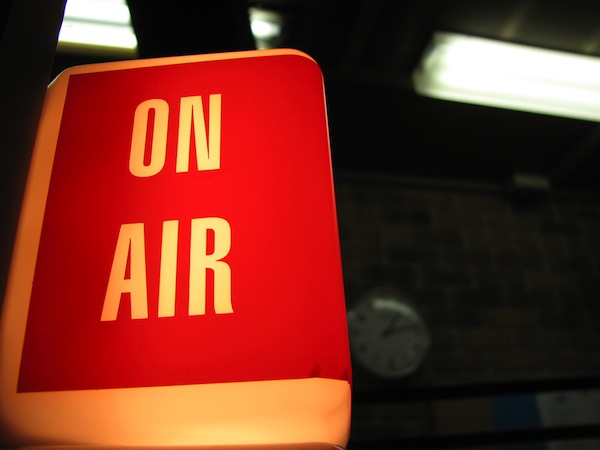

For more than a decade, community radio advocates have been fighting to get more low power radio stations on the FM dial. The Federal Communications Commission took a step in that direction this week by adopting new rules that clear the way for a substantial increase in a class of low-power radio stations.
From a technological standpoint, terrestrial FM radio signals that barely extend two miles might seem old-school. But it represents an enormous chance for underserved communities to organize, communicate, and collaborate. The FCC expects to be able to begin accepting applications for new low-power — or LPFM — stations by early 2013.
“This is the first opportunity to apply for low power anywhere in the country in 12 years, and the first time there’s been an opportunity for urban radio in decades,” said Brandy Doyle, policy director for the nonprofit LPFM advocate Prometheus Radio Project. “It’s going to be the first opportunity in a long time and also the last opportunity of its kind. After this, there won’t be any spectrum left. The FM dial is going to be pretty much full, so this is a historic opportunity.”
“They flipped for a profit, essentially speculating on the public airwaves.”
The new rules set out to accomplish a number of goals. In addition to making available more frequencies for community radio, they also aim to curb speculation in the translator market by putting a 50-translator cap on the number of new licenses one group can acquire nationwide. In any given market, applicants are limited to one license.
“The FCC did not originally put a lot of restrictions [on applicants], so you had these giant translator networks that have hundreds or thousands of these translators all over the country,” Doyle said. “They’re largely noncommercial religious networks…The license is free to apply for but, unlike a low-power, you’re allowed to sell your [translator] license to someone else. The biggest filers applied for thousands and then when they got them they flipped for a profit, essentially speculating on the public airwaves, and they didn’t actually break any rules.”
Now, the FCC is getting ready to process a backlog of thousands of translator applications, as well as substantially expand LPFM licensing opportunities in medium and large markets. A cluster of communities in urban Minnesota have been closely tracking the FCC’s action on the issue, including the LPFM victory that came with President Barack Obama’s 2011 signing of the Local Community Radio Act. That law removes the ban on having low-power stations within three “clicks” on the dial of a full-power station, a requirement based on worries about interference.
Community organizer Danielle Mkali is working to get two licenses for low power radio stations in the Twin Cities. Mkali, who focuses on media justice for the nonprofit Main Street Project, says the dense and diverse urban areas in the region are vastly underserved by existing media.
“What were hoping to do is probably not unlike a lot of other communities that are looking for ways to build power and get their voices heard,” Mkali said. “We know that, for one thing, we don’t often see ourselves reflected in the media in ways that are accurate or positive. People of color, immigrants, low-income people in general — to be able to see our cultural strengths or traditions reflected in a positive light, we’re not necessarily hearing on the radio right now.”
The other major piece of the equation is news.
The Twin Cities is home to a diverse population of non-English speakers, including substantial Spanish-speaking, Hmong-speaking, and African-language-speaking groups. “There’s a huge population of Somali and East African immigrants,” Mkali said. “What makes Phillips [a diverse Minneapolis neighborhood] really unique is it has the largest concentration of urban Native Americans in the country. In St. Paul, the neighborhood that we’re focusing on, Frogtown, has the largest population of Hmong immigrants in the country.”
The addition of low-power radio, produced and run by members of these communities, could connect them to the larger region — including decisions lawmakers are already making with their tax dollars on their behalf — in a way that’s not possible now.
“Being able to understand what’s happening in the neighborhood, heard in their own language and being able to create some influence around community changes and policy is really important to us,” Mkali said. “There’s been studies done in Phillips, and not a lot of people in that neighborhood have broadband access. Being able to get information to people through the Internet is not necessarily working in these neighborhoods, and we know that radio is really affordable, and it’s also something that you can engage with at home while you’re doing other things. You can be with your kids and have a lot going on and still listen to the radio and feel like you are a part of your community.”
Photo by William Li used under a Creative Commons license.